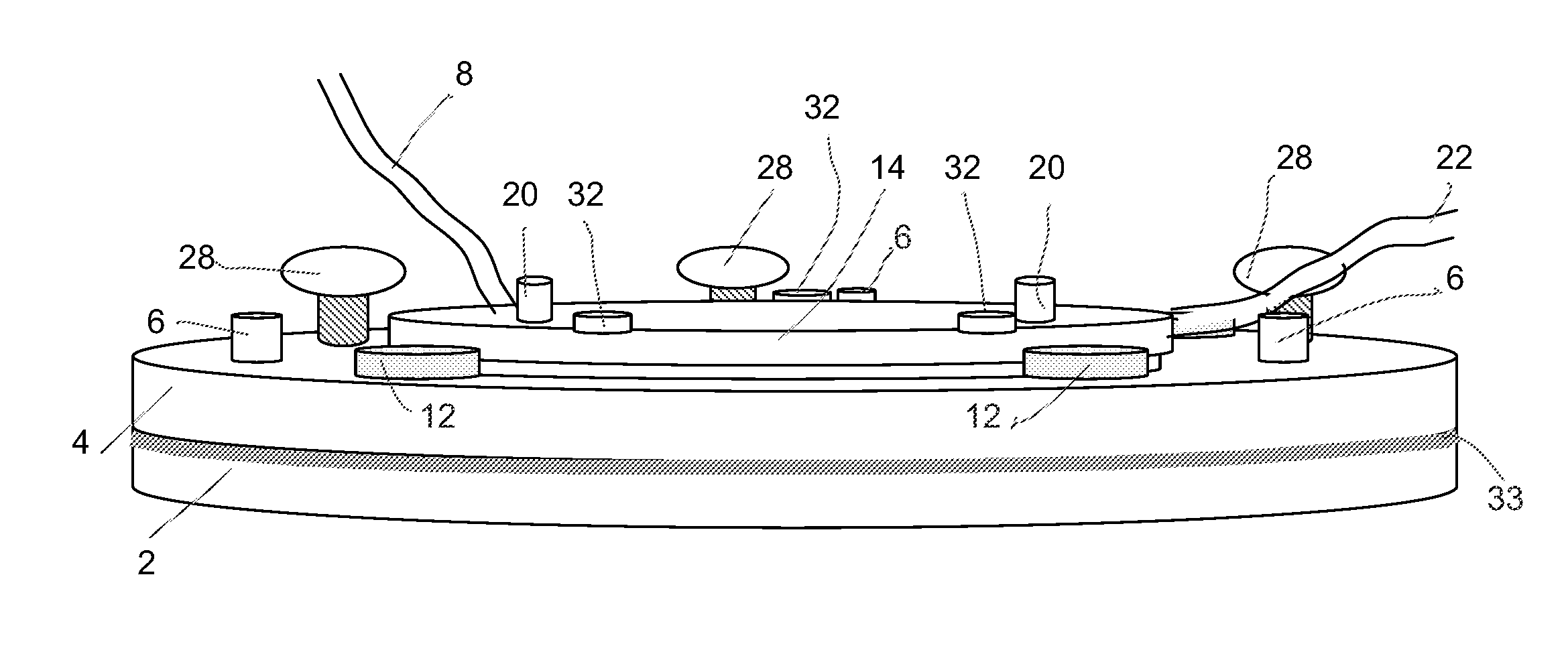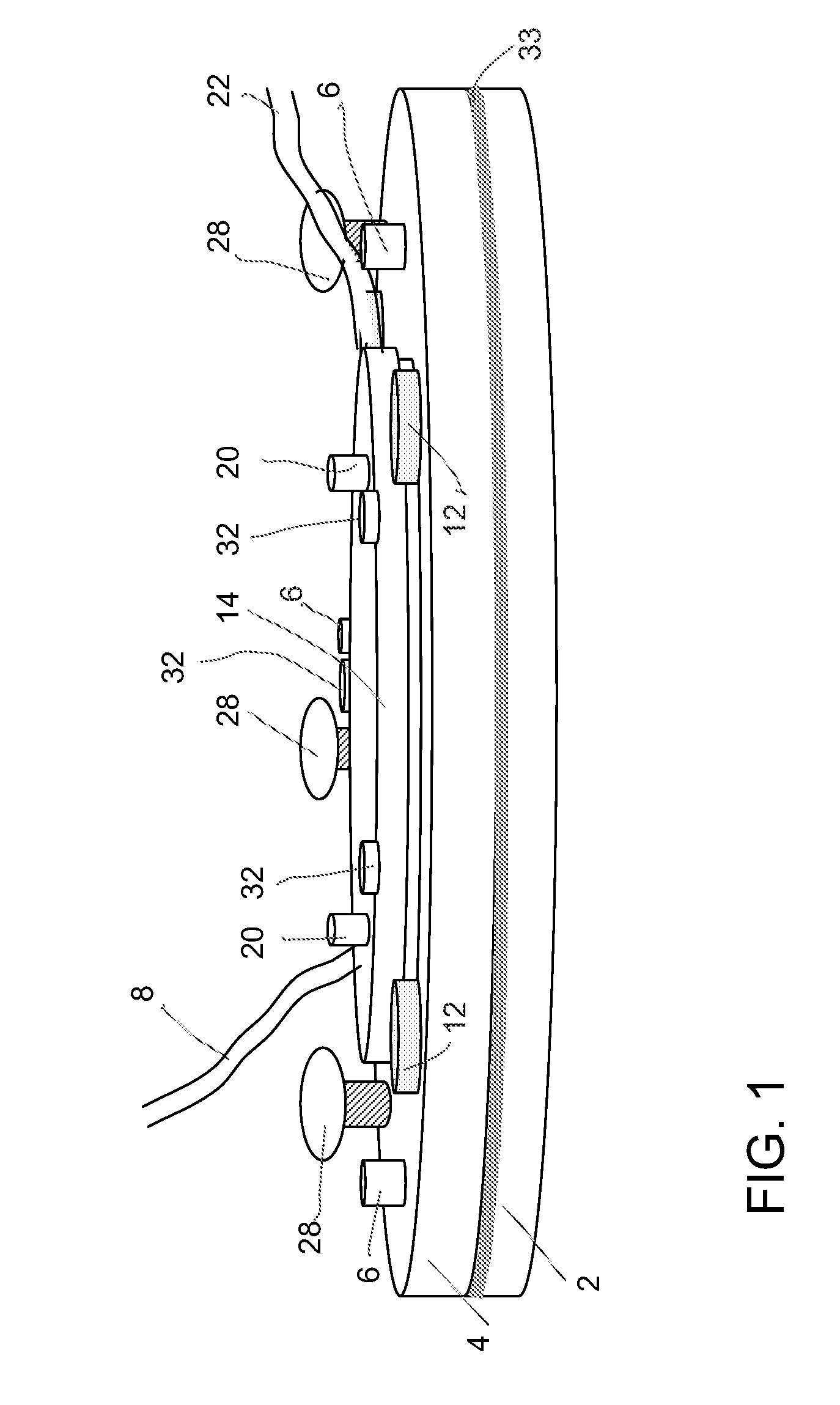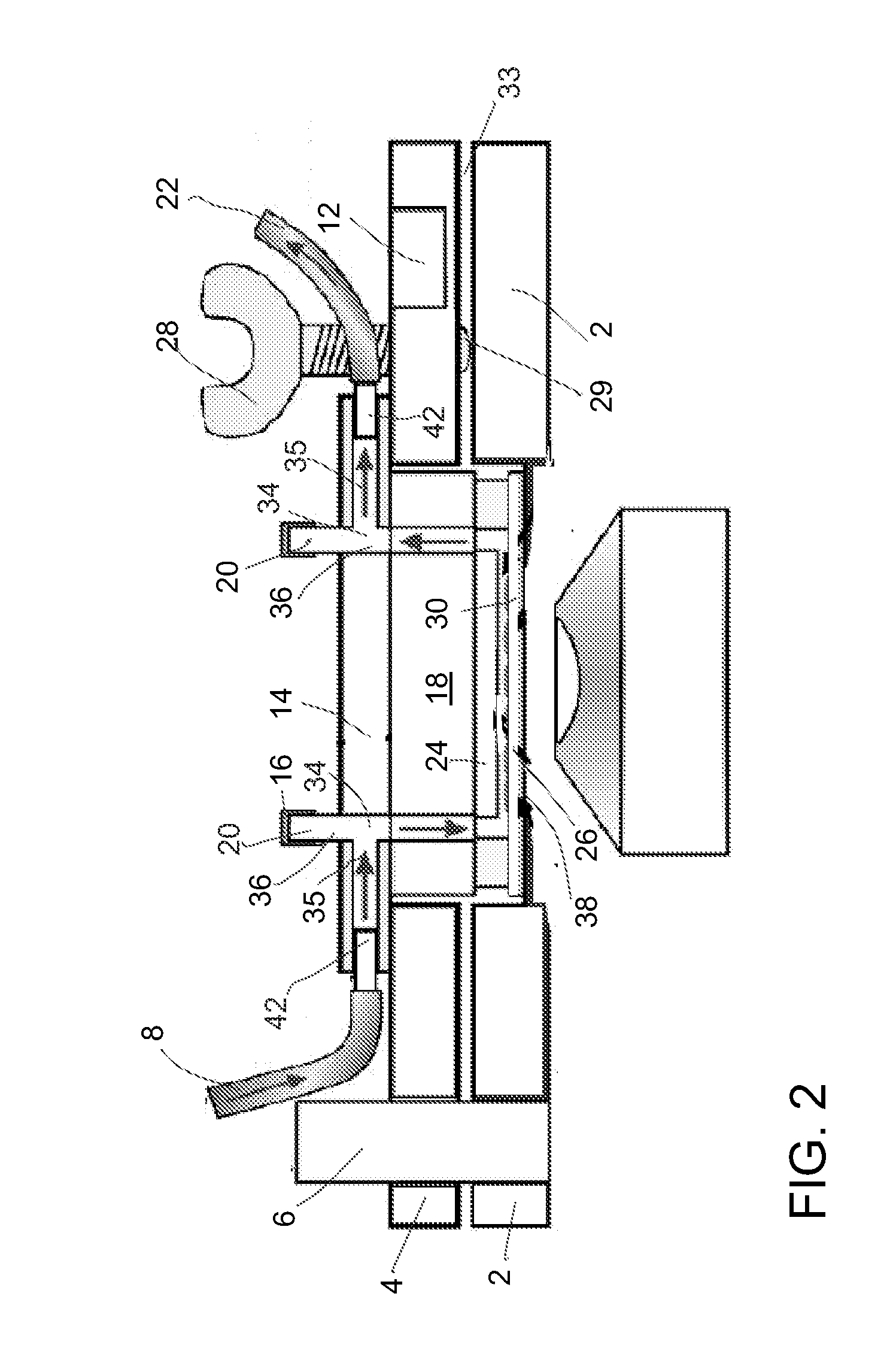Microfluidic system and method for using same
a microfluidic system and microfluidic device technology, applied in the field of microfluidic system and method for using same, can solve the problems of requiring substantially more reagents, difficult to measure and control the site density of adhesion molecules, and difficult to load cells into such microfluidic devices
- Summary
- Abstract
- Description
- Claims
- Application Information
AI Technical Summary
Benefits of technology
Problems solved by technology
Method used
Image
Examples
example 1
Migration and Alignment of Cells
[0042]The microfluidic device used in this test had a microchannel network with 8 separate rectilinear test regions and with surface shear stress varying by a factor of ˜2 between each region, thus covering a 128-fold range in the shear stress, from low venous to arterial.
[0043]Human Umbilical Vein Endothelial Cells (HUVECs) (Cambrex) were grown in endothelial basal medium (EBM-2) containing endothelial growth factor supplements (EGM-2 bullet kit, Cambrex). Circular 25 mm, #2 cover glasses were rinsed in methanol, spin-dried, treated for 5 seconds with air plasma using a laboratory corona treater (BD-20AC, by Electro-Technic Products, Inc., IL), and coated with fibronectin by placing a droplet of a 5 μg / ml fibronectin solution onto a cover glass and incubating it for 1 hr. The cover glass surface was subsequently blocked by 30 min incubation under a 1% solution of heat-denatured BSA. An estimated 0.5×106 HUVEC cells were plated on the fibronectin-coat...
example 2
Endothelial Cells Under Shear Flow
[0059]As a second test of the magnetic clamp and microfluidic chip, and to demonstrate their utility for live cell applications, a series of experiments were run with endothelial cells under shear flow, including experiments on the alignment of endothelial monolayer and healing of a scratch wound in it.
[0060]The endothelium monolayer and the microchannel network were examined immediately after the clamp was closed and the device was sealed. Consistently, there was no visible damage to the endothelium at the bottom of the microchannels, no clogging of the relatively narrow resistance channels by cells, and no detached cells in the microchannels. Cells near side walls of the test regions did not suffer any detectable damage (or viability problems) from possible motion of the chip in the plane of the cover glass (twist) during the setup closing. Moreover, many cells immediately adjacent to the walls, whose parts were cut by the PDMS chip, rapidly recov...
example 3
Transfection of Cells
[0063]To demonstrate the feasibility of transfection of cells in the monolayer using a standard protocol and of the subsequent visualization of fluorescently tagged cells under shear flow, a plasmid encoding fluorescent protein pmAKAR3 was used. This protein has two separate fluorescent domains, cyan and yellow (CFP and YFP), and a phosphorylation target specific to protein kinase A (PKA). The distance between the two fluorescent domains is reduced when the target is phosphorylated. Therefore, this protein can serve as a Förster resonance energy transfer (FRET) reporter of intracellular PKA activity. Transient transfections of endothelium monolayer were performed using FuGENE 6 transfection reagent (Roche Diagnostics) and a protocol provided by the manufacturer. A mixture of the plasmid and FuGENE 6 reagent diluted with a serum-free medium (100 μL) was directly pipetted onto a cover glass with a confluent endothelial monolayer. The fraction of cells that were tr...
PUM
 Login to View More
Login to View More Abstract
Description
Claims
Application Information
 Login to View More
Login to View More - R&D
- Intellectual Property
- Life Sciences
- Materials
- Tech Scout
- Unparalleled Data Quality
- Higher Quality Content
- 60% Fewer Hallucinations
Browse by: Latest US Patents, China's latest patents, Technical Efficacy Thesaurus, Application Domain, Technology Topic, Popular Technical Reports.
© 2025 PatSnap. All rights reserved.Legal|Privacy policy|Modern Slavery Act Transparency Statement|Sitemap|About US| Contact US: help@patsnap.com



